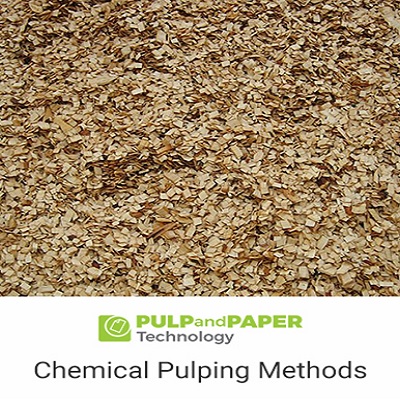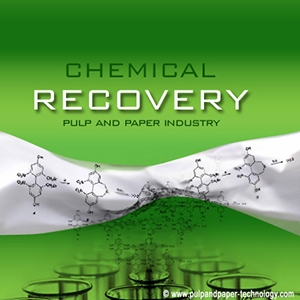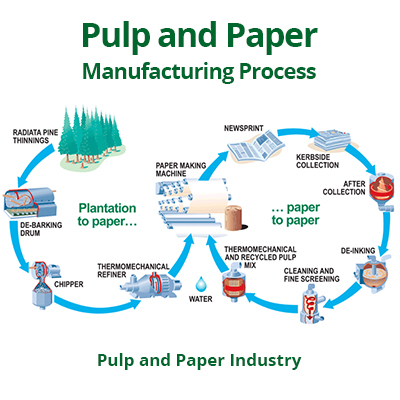Chemical Pulping Methods

Chemical pulping uses the pulp produced from wood after it has been chemically digested to make fibers. Chemical pulping offers higher-quality paper than conventional mechanical pulping, but it also produces thinner pulp fibers and fewer of them. High-quality white paper and other high-quality paper products are made with chemical pulp. However, only 45% of the raw wood put in is returned as pulp, compared to 60% with traditional methods like wood burning. Despite the fact that many sulfur-free methods have been suggested, sulfur-based compounds are still the most widely used in pulping today. Sulfate or Kraft pulping, acid and alkaline sulfite pulping, neutral sulfite semi-chemical (NSSC) pulping, and soda pulping are the currently available techniques. Kraft pulping has led the way in chemical pulping because it can make useable pulps from any type of wood, recovers energy and chemicals from used pulping liquor better than any other method, and consistently produces the strongest pulp.
| Also Read: Optimizing Paper Production: The Role of Chemical Pulping |
The Process of Chemical Pulping
Chemical pulping is the most common type of refining process, extracting fibers from wood by cooking the material in a chemical solution and increasing pressure. This type of processing yields a high-quality pulp (40-55% yield) but produces lower-quality paper (office paper).
Kraft pulping
In this method, wood chips are first preheated and softened to eliminate trapped air. They are blended with white liquor, a highly alkaline solution made of sodium hydroxide and sodium sulphide. This solution is then pumped into a digester, where it is pressurized and cooked at 160–170°C over several hours. After being cooked, the digester's contents are pushed under pressure into a blow tank. As the chips and cooking liquor enter the blow tank, they disintegrate into fibers or "pulp." The pulp and spent cooking liquor are separated in a series of brown stock washers. There are two primary types of digesters:
Batch digesters cook wood chips in batches and are cheaper to set up, while continuous digesters cook wood chips continuously and are more efficient.
Sulfite pulping
The cooking liquor for sulfite pulping is a mixture of sulphurous acid and bisulfite ions. It's prepared by absorbing cooled sulphur dioxide gas in water containing one of four chemical bases: magnesium, ammonia, sodium, or calcium. This process uses the acid solution to degrade lignin bonds between wood fibers.
Sulfite pulps can be bleached more easily. Their colour is less than that of kraft pulp, so the use of sulfite pulping has declined in comparison to kraft pulping over time. Sulfite pulping allows the recycling of chemicals used for energy recovery and solvent regeneration.
The process selected for implementation depends on the wood species available and economic factors.
The acid Sulfite Process
The acid sulfite process uses strongly acidic cooking liquor with a temperature range of 125 to 145 degrees and a time range of 3 to 7 hours. It uses calcium base. This process is most often used on cotton and paper materials.
Neutral sulfite semi-chemical (NSSC) process
The neutral sulfite semi-chemical (NSSC) process is the dominant semi-chemical pulping process, and it typically involves cooking in Na2SO3-buffered solution at a neutral PH, followed by mechanical refining to liberate fibers.
Wood chips are roasted in a neutral solution of sodium sulfite and sodium carbonate during NSSC pulping. The reaction between the lignin in the wood and the sulfite ions is what makes this process work. Sodium bicarbonate acts as a buffer to maintain neutral conditions, and because of its ability to act as a buffer, semi-chemical processes achieve pulp to wood returns as high as 60–80%. During the recovery process, NSSC mills dispose of their spent liquor, recover the cooking chemicals, or mix their spent liquor with the kraft liquor as a source of makeup chemicals. Recovery is employed when this is done.
SUMMARY
At present, the chemical pulping industry uses sulfate, sulfite, and soda processes for separating lignin from wood and from some annual plants such as bagasse, different straw species, flax, hemp, and bamboo.









